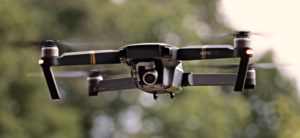 The Federal Highway Administration (FHWA) recently announced another round of Every Day Counts (EDC) innovations. EDC is a State-based model that identifies and rapidly deploys proven, yet underutilized innovations to shorten the project delivery process, enhance roadway safety, reduce traffic congestion, and improve environmental sustainability. Under the fifth round of EDC innovations, FHWA selected the following 10 innovations to be advanced under EDC-5.
The Federal Highway Administration (FHWA) recently announced another round of Every Day Counts (EDC) innovations. EDC is a State-based model that identifies and rapidly deploys proven, yet underutilized innovations to shorten the project delivery process, enhance roadway safety, reduce traffic congestion, and improve environmental sustainability. Under the fifth round of EDC innovations, FHWA selected the following 10 innovations to be advanced under EDC-5.
Advanced Geotechnical Exploration Methods
Conventional subsurface exploration methods provide limited data for project design, which can result in constructability issues and increased cost. Advanced geotechnical exploration methods offer solutions for generating more accurate geotechnical characterizations that improve design and construction, leading to shorter project delivery times and reducing the risks associated with limited data on subsurface site conditions.
Collaborative Hydraulics: Advancing to the Next Generation of Engineering (CHANGE)
Advances in hydraulic modeling tools are providing a more comprehensive understanding of complex flow patterns at river crossings versus traditional modeling techniques. These 2D hydraulic modeling and 3D computer visualization technologies also facilitate more effective communication and collaboration, improving agencies’ ability to design safer and more cost-effective and resilient structures on waterways.
Project Bundling
Many States continue to see an increase in the number of highways and bridges needing attention, and those that are posted for reduced loads adversely affect travel, freight movement, and emergency response times. Project bundling helps address this national issue. By awarding a single contract for several similar preservation, rehabilitation, or replacement projects, agencies can streamline design and construction, reduce costs, and effectively decrease transportation project backlogs.
Reducing Rural Roadway Departures
Reducing fatalities on rural roads remains a major challenge in the United States. Roadway departures on the rural road network account for one-third of traffic fatalities. Systemic application of proven roadway departure countermeasures, such as rumble strips, friction treatments, and clear zones, helps keep vehicles in their travel lanes, reduce the potential for crashes, and reduce the severity of those crashes that do occur.
Safe Transportation for Every Pedestrian (STEP)
Pedestrians accounted for 16 percent of all roadway fatalities, and crashes are predominantly at midblock and intersection crossing locations. As pedestrian safety continues to be a concern for transportation agencies across the country, cost-effective countermeasures are available to assist practitioners in providing safer crossings for all pedestrians.
Unmanned Aerial Systems (UAS)
UAS can benefit nearly all aspects of highway transportation, from inspection to construction and operations, by collecting high-quality data automatically or remotely. These relatively low-cost devices allow agencies to expedite the data collection needed for better-informed decisions while reducing the adverse impacts of temporary work zones on work crews and the traveling public.
Use of Crowdsourcing to Advance Operations
State DOTs and local agencies traditionally rely on data from fixed sensors and cameras that monitor single locations to operate and manage their transportation systems. Using new sources of crowdsourced traffic data, agencies have access to large amounts of reliable, real-time data with more geographic coverage of the transportation system than with traditional sources. Combining crowdsourced data with traditional data sources enables better management and operation of the transportation system through faster detection of and response to problems, faster and more accurate traveler information to the public, and more proactive and effective operations strategies.
Value Capture: Capitalizing on the Value Created by Transportation
When public agencies invest in transportation assets that improve access and increase opportunity in the community, adjacent property owners benefit through greater land value and other economic impacts. Many techniques are available to the public sector to share in a portion of this increased land value to build, maintain, or reinvest in the transportation system.
Virtual Public Involvement
Robust public engagement during transportation planning and project development can accelerate project delivery by identifying issues and concerns early in the process. Virtual public involvement techniques, such as telephone town halls and online meetings, offer convenient, efficient, and low-cost methods for informing the public, encouraging their participation, and receiving their input.
Weather-Responsive Management Strategies
More than 20 percent of crashes are weather-related, and weather-associated delays can result in significant losses in productivity and efficiency. Weather-responsive traffic and maintenance management strategies support State and local transportation agencies in deploying improved traffic control and traveler information systems that will significantly reduce highway crashes and delays resulting from adverse weather. It also promotes anti-icing strategies for reducing chloride use.
For more information on EDC-5, refer to the FHWA’s Center for Accelerating Innovations EDC-5 website.

